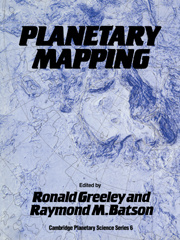Description
Planetary Mapping
Cambridge Planetary Science Old Series
Coordinators: Greeley Ronald, Batson Raymond M.
Planetary Mapping describes the history and process of mapping planets and satellites beyond the Earth.
Language: English
Subject for Planetary Mapping:
Publication date: 02-2007
312 p. · 20.9x27.6 cm · Paperback
312 p. · 20.9x27.6 cm · Paperback
Description
/li>Contents
/li>
Planetary Mapping describes the history and process of mapping planets and satellites beyond the Earth. Mapping planetary bodies is a unique process much different from ordinary terrestrial cartography. Although many kinds of imaging systems have been launched into interplanetary space, nearly all of them were designed for purposes other than map-making. Thus, special mapping techniques described in this book had to be invented to make use of images from space. Furthermore, planets and satellites are difficult to depict in maps. For instance, unlike on Earth, on planetary bodies there are no shorelines, rivers, roads or political boundaries to guide the map-maker. The book begins with an introduction to the differences between terrestrial and planetary mapping and continues with a general discussion of the history of planetary mapping. The fundamentals of cartographic techniques are described in detail in the next chapter. This is followed by sections on planetary nomenclature, geodetic considerations, and topographic and geologic mapping.
Preface; List of contributors; 1. Introduction R. Greeley and R. M. Batson; 2. History of planetary cartography R. M. Batson, E. A. Whitaker and D. E. Wilhelms; 3. Cartography R. M. Batson; 4. Planetary nomenclature M. E. Strobell and H. Masursky; 5. Geodetic control M. E. Davies; 6. Topographic mapping S. S. C. Wu and F. J. Doyle; 7. Geologic mapping D. E. Wilhelms; Appendices R. M. Batson and J. L. Inge; Index.
© 2024 LAVOISIER S.A.S.

